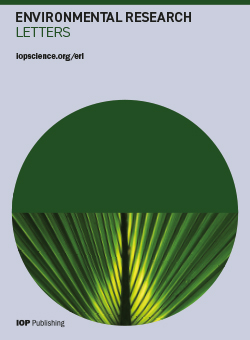萨尔顿海已知地热资源区(SS-KGRA)地热扩张和锂开采对当地水资源的影响
IF 5.6
2区 环境科学与生态学
Q1 ENVIRONMENTAL SCIENCES
引用次数: 0
摘要
加利福尼亚州萨尔顿海地区目前为生产地热能源而引入地表的盐水含有高浓度的锂,有可能在盐水重新注入地热储层之前被提取出来。这将为美国生产锂电池创造一个新的国产锂供应链,有助于推动向可再生能源电网的过渡。在萨尔顿海已知地热资源区,正在考虑扩大地热生产和锂提取的计划。我们结合科罗拉多河流域未来可能的取水限制,讨论了与地热扩张和锂生产相关的水供应和水质问题以及潜在的水污染问题。我们估计,目前拟议的地热生产和锂开采设施的用水需求仅占该地区历史供水量的 4%。从现在到 2050 年,科罗拉多河对该地区水资源分配的削减建议对该地区水资源分配的影响将大于地热生产及相关锂开采的扩张。要准确规划未来的用水需求,需要更多有关锂提取和提炼过程中的用水需求的具体信息。本文章由计算机程序翻译,如有差异,请以英文原文为准。
Impact of geothermal expansion and lithium extraction in the Salton Sea known geothermal resource area (SS-KGRA) on local water resources
Saline brines currently being brought to the surface to produce geothermal energy in the Salton Sea region of California contain high concentrations of lithium that could potentially be extracted before the brine is reinjected back into the geothermal reservoir. This would create a new supply chain of domestically sourced lithium for the United States to produce lithium-based batteries that will help drive the transition to a renewable-based energy grid. Plans to expand geothermal production along with lithium extraction are being considered in the Salton Sea known geothermal resource area. We discuss water availability and quality issues and potential concerns about water pollution associated with this geothermal expansion and lithium production in the context of potential future restrictions on water extractions from the Colorado River Basin. We estimate that water demand for currently proposed geothermal production and lithium extraction facilities only accounts for ∼4% of the historical water supply in the region. Regional water allocation will be more impacted by the proposed cuts to the region’s water allocation from the Colorado River between now and 2050 than by expansion of geothermal production with associated lithium extraction. Accurately planning for water needs in the future will require more specific information about water demands of the lithium extraction and refining processes.
求助全文
通过发布文献求助,成功后即可免费获取论文全文。
去求助
来源期刊

Environmental Research Letters
环境科学-环境科学
CiteScore
11.90
自引率
4.50%
发文量
763
审稿时长
4.3 months
期刊介绍:
Environmental Research Letters (ERL) is a high-impact, open-access journal intended to be the meeting place of the research and policy communities concerned with environmental change and management.
The journal''s coverage reflects the increasingly interdisciplinary nature of environmental science, recognizing the wide-ranging contributions to the development of methods, tools and evaluation strategies relevant to the field. Submissions from across all components of the Earth system, i.e. land, atmosphere, cryosphere, biosphere and hydrosphere, and exchanges between these components are welcome.
 求助内容:
求助内容: 应助结果提醒方式:
应助结果提醒方式:


